‘I can’t wait to see what the London Art Salon is offering next.’
‘I met my partner at the London Art Salon.’
‘The London Art Salon has become a part of our social calendar now.’
‘I feel clued-up whenever I leave a London Art Salon event.’
‘The venues are quirky and the talks addictive.’
‘They always surprise me, just a little. I am happy to be included in the London Art Salon community.’
‘That event was lively, fun, … had some surprises and was filled with a great group of people.’
‘It was great being able to swish into those intimidating galleries under your wing!’
‘It really was a great voyage of discovery. So interesting. A city within a city!’
In 2019 we celebrated our 6th birthday! Please click here to see our events in 2014-15 and click here for 2016-17.
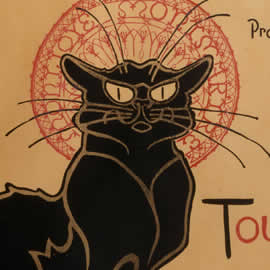
‘The economy is in shambles, let's be bourgeoisie and decadent.’
Sally Bowles, film Cabaret, 1972
In this morning event, in time for the 2019-20 Barbican exhibition ‘Into the night: cabarets and clubs in modern art’, author and art historian Patrick Bade took us on a visual and musical tour of the excitement and excess of avant-garde nightlife in Berlin, Vienna, and Paris from the 1880s to the 1930s.
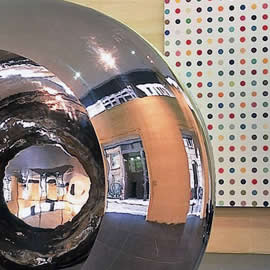
The Deutsche Bank art collection started in the late 1970’s and forty years later, there are 100 conference rooms in the bank's London buildings named after artists from around the globe. In each room a wall plaque provides a short biography of the artist alongside their work. Floors and corridors are also hung with the collection. The reception area of the London headquarters features large artworks by Keith Tyson and Damien Hirst as well as major sculptures by Anish Kapoor and Tony Cragg. Other highlights include Bridget Riley and Tracey Emin
With this private evening tour of the Deutsche Bank collection art historian Julia Musgrave gave London Art Salon guests access to a collection not usually open to the public.
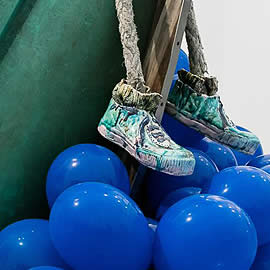
‘If Margaret Thatcher and Andy Warhol were miraculously to conceive a child, the offspring would be an art fair.’ ... Artist Afshin Dehkordi, Guardian 2012
Frieze London, London’s pre-eminent contemporary art event, takes place each October in Regent’s Park.
For this annual art fair, art historian Ali Cohen ran three 60-minute tours of the fair, looking at what was trending among the emerging galleries, as well as seeing what was news-making from established galleries and celebrity artists.
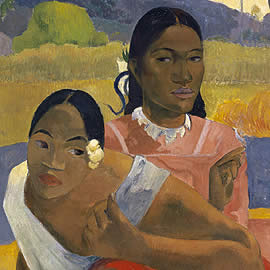
‘Colonialist, chauvinist, exploiter . . . Gauguin may have been all these things and more – but his faults are what make him great.’
Adrian Searle, The Guardian, 2010
In this evening event, as background to the National Gallery’s 2019-20 exhibition Gauguin Portraits, author and art historian Dr. Marie-Anne Mancio explored the art and life of this post-impressionist master, from his self-promotion in Paris to his loutish behaviour in Tahiti.
As art critic Searle says, ‘Gauguin is an artist, both outsider and careerist, who is a little bit dodgy in a way that anyone acquainted with today's art world would recognise.’
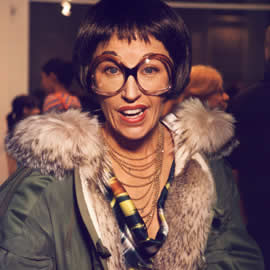
“She's a Hitchcock heroine, a busty Monroe, an abuse victim, a terrified centrefold, a corpse, a Caravaggio, a Botticelli, a mutilated hermaphrodite sex doll, a man in a balaclava, a surgically-enhanced Hamptons type, a cowgirl, a desperate clown, and we've barely started.” - The Guardian
In time for the 2019 National Portrait Gallery Cindy Sherman retrospective, author and art historian Dr Marie-Anne Mancio examined the mind-blowing photography of this 20th-century shape-shifting chameleon.
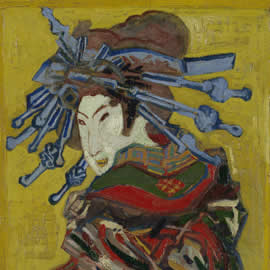
Vincent van Gogh’s life as an artist spanned an all-too-short ten years – the art that inspired him in London and Paris was not just that of his contemporaries but also Old Masters and the newly imported works by Japanese printmakers. An art world of galleries, one particular shop, magazines and a network of friendships are at the root of van Gogh’s ideas – but how did they come together in London and Paris?
In time for the 2019 Tate Britain exhibition Van Gogh in Britain art historian Julia Musgrave teased out Vincent's network of art-world connections.
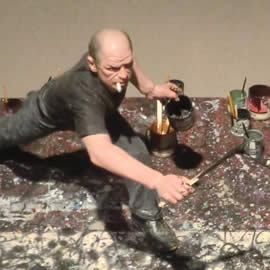
"He’s caked on the paint… and then shaped it, not with a brush, but with his palette knife and fingers." - BBC Arts Editor Will Gompertz about Vincent Van Gogh
Fontana slashed the canvas with blades.
Pollock splattered paint from above.
Turner commanded the sea with his strokes.
Rembrandt used his thumbs.
How captivating to view painting through the eyes of the artist, revealing their choice of gestures and materials - the dripping pigment, the erased pencil marks, the glimpses of naked canvas, the brazen outcrops of paint.
We joined artist and Central St. Martins lecturer Alice White first at the Art Workers' Guild and then for a follow-up tour of the National Gallery as she explored the subtleties of the artist’s creative process.
This event was so popular that we repeated it in our autumn season on Wednesday 27th November.
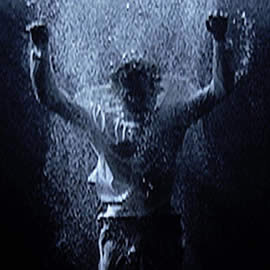
Philosophical, spiritual and gorgeous.
The artwork of Renaissance master Michelangelo and contemporary video artist Bill Viola embodies these qualities. These artists are from different centuries but both speak to similar universal themes of life, death, and rebirth.
The Royal Academy’s 2019 exhibition Bill Viola / Michelangelo featured the exquisite, timeless drawings of Michelangelo side by side with ethereal, hypnotising works by Bill Viola.
We joined author and art historian Dr Marie-Anne Mancio as she considered the transcendent talents of these two artistic geniuses in an attempt to tackle the most fundamental questions about humanity.
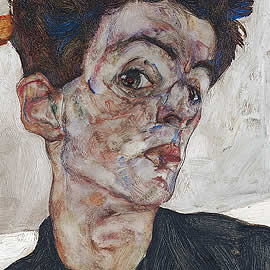
While the Cubists and Fauvists pushed the visual language of art to extremes in Paris, and Russian artists were tilting towards political revolution, avant-garde art in pre-WWI Vienna unfolded in a very different direction. More than any other artist, Egon Schiele used his art to explore the depths of his own psychology, scrutinising his desires and anxieties with the utmost directness and intensity. But, given that Sigmund Freud and others were also exploring these realms in Vienna, was Schiele exploring his own mind or was he simply a sign of the times?
In time for the 2018 Royal Academy exhibition Klimt / Schiele, art historian Andrew Spira explored the raw angst and stark sensuality of bad boy Egon Schiele.
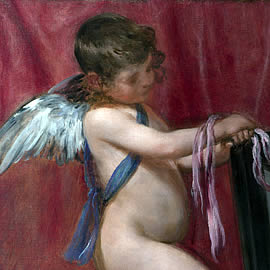
So many pictures to see – and so many secrets!
In this morning tour art historian Julia Musgrave uncovered some of the scandals, politics, philosophies and self-promotion behind a selection of masterpieces in the National Gallery collection.
From the intoxicating beauty of Venus (and its unfortunate consequences) to one of the scandals of the American War of Independence, we looked at paintings from the 15th to the 19th century with stories and personalities both mythical and modern.
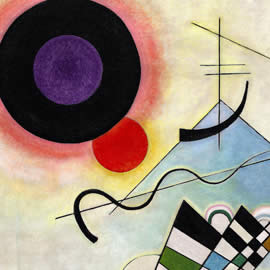
Founded in Germany 1919, the Bauhaus School aimed to merge the fine arts with functional design, to bridge the gap between art and industry. The Bauhaus became famous for its revolutionary teaching methods, insisting students create beautiful objects with ‘a feeling of balance or rightness’.
The school is most renowned for its legendary teaching staff including painters Wassily Kandinsky, Anni and Josef Albers, and Paul Klee. Their experiments with Geometric Abstraction influenced generations of contemporary artists and designers, with a style so prolific that their impact can not only be seen on the walls of Tate Modern, but also on pillow cases at John Lewis.
In time for the October 2018 Anni Albers show at Tate Modern, author and art historian Dr Marie-Ann Mancio took us behind the scenes of the Bauhaus to explore these geniuses of abstraction, their art, their loves and their legacy.
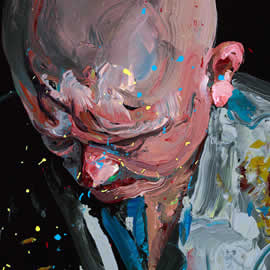
When Frieze London comes to town, so do global VIP collectors. Mayfair’s blue-chip galleries respond by exhibiting the art world’s best in show.
Art historian Ali Cohen was our guide for this gallery tour which started at Hauser & Wirth in Savile Row and encompassed a morning's contempoary art excitement.
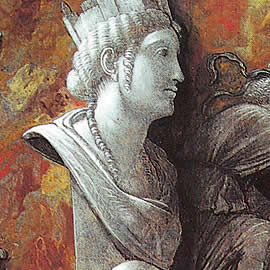
Early Italian renaissance ideas of realism and pictorial space developed in Florence but spread rapidly across Italy as the city’s most sought-after artists were hired to work outside their home town. The marriage of Andrea Mantegna to Nicolosia, the daughter of the Venetian artist Jacopo Bellini, meant that the ideas of the Florentine sculptor Donatello, whose work Mantegna had seen in Padua, were discussed and taken up by the Bellini family workshop in Venice, in particular by his brother-in-law and friend Giovanni Bellini.
Neither artist stopped at mere emulation. In 1460, Mantegna moved to Mantua where he occupied the post of court painter to the ruling Gonzaga family until his death aged 75 in 1506. Bellini, who died 10 years later aged 86, spent his entire career in Republican Venice. Despite the distance between them, their work provides evidence of a continuing creative artistic exchange as both continued to develop new ideas well into old age.
In time for the 2018 National Gallery Mantegna and Bellini, art historian Julia Musgrave looked at how brothers-in-law can become brothers in art and explores the quietly revolutionary influence of a family of Venetian artists.

‘If Margaret Thatcher and Andy Warhol were miraculously to conceive a child, the offspring would be an art fair.’ ... Artist Afshin Dehkordi, Guardian 2012
Frieze London, London’s pre-eminent contemporary art event, takes place each October in Regent’s Park.
In 2018, art historian Ali Cohen ran three 60-minute tours of the fair, looking at what was trending among the emerging galleries, as well as seeing what was news-making from established galleries and celebrity artists.

“Kahlo is variously enshrined in the popular imagination as a bohemian artist, a victim turned survivor, proto-feminist, sexual adventurer who challenged gender boundaries, and, with her mixed-race parentage, an embodiment of a hybrid, postcolonial world.” says the Tate.
She was also a style icon in the Americas, and had intense love affairs with Diego Rivera, Leon Trotsky, and painter Jacqueline Lamba (wife and muse of Surrealism founder André Breton).
With such a powerful cult of personality, no wonder Kahlo’s art has been eclipsed since her death in 1954. But she did produce over 200 works and is now revered by artists as diverse as Cindy Sherman, Kiki Smith and Madonna.
In time for the V&A's 2018 exhibition Frida Kahlo’s Wardrobe we joined art historian and writer Dr Marie-Ann Mancio as she explored the style, loves and art of the 'Frida Phenomenon'.
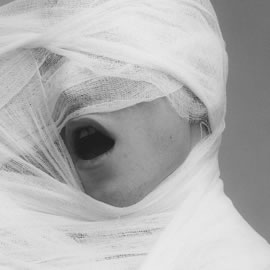
A gay photographer in seedy 1970s New York and an angry painter in war-torn Germany – Robert Mapplethorpe and Anselm Kiefer are better known for controversial messages rather than their works’ composition and style. But the shapes and imagery of their art pulse with the curves, shades and space of 19th-century French sculptor Auguste Rodin.
Inspired by two recent exhibitions at the Musée Rodin in Paris, writer and art historian Marie-Ann Mancio explored the radical brilliance of Rodin and the sculptor’s influence on contemporary artists Robert Mapplethorpe and Anselm Kiefer.
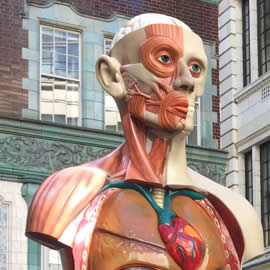
On this morning walk, we explored the 2000-year-old history of the City of London on a walking tour with award-winning London Blue Badge Tour Guide, Gavin Webb (winner of the London Luxury Travel Guide Tour Guide of the Year 2018).
He took us to atmospheric Dickensian alleys, hidden gardens, vibrant Victorian markets, medieval churches and striking modern buildings and we found out how the Financial City has given us everyday conversational expressions and how its striking architecture reveals the fascinating history of this unique area - a city within a city!
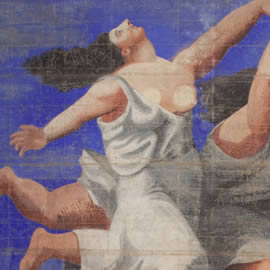
Towards the end of WWI, much of Europe’s spirit was broken and some artists were attracted to a return to order – Neoclassicism was back. Picasso continued to create Cubist works during this time, but a visit to Italy in 1917 inspired him to also paint in a classical style. This visit also led to his meeting Sergei Diaghilev, the ambitious and eccentric founder of the Ballets Russes, an avant-garde dance company whose participants included composer Igor Stravinsky, artist Vasily Kandinsky and designer Coco Chanel.
Author and art historian Patrick Bade took a fresh take on an old master as he showed us images from a lesser known period of Picasso’s life when he joined forces with the innovative Russian dance impresario to produce costumes and stage sets that dancer Lydia Lopokova described as ‘moving and alive’.

The Deutsche Bank art collection started in the late 1970’s and forty years later, there are 100 conference rooms in the bank's London buildings named after artists from around the globe. In each room a wall plaque provides a short biography of the artist alongside their work. Floors and corridors are also hung with the collection. The reception area of the London headquarters features large artworks by Keith Tyson and Damien Hirst as well as major sculptures by Anish Kapoor and Tony Cragg. Other highlights include Bridget Riley and Tracey Emin
With this private evening tour of the Deutsche Bank collection art historian Ali Cohen gave London Art Salon guests access to a collection not usually open to the public.
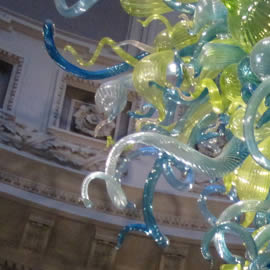
In its 166-year history it has amassed a collection of practical, beautiful and sometimes bizarre objects: from 2-metere wide mantua dresses to burkinis, from man-eating tiger pianos to Eames bookcases, from tapestries to taxidermy the V&A's collection has been created by artists and makers from all over the world.
In this morning tour Julia Musgrave art historian and V&A addict gave an intriduction to some of the museum's more unusual exhibits.
'Entertaining and informative... and very enjoyable!'

Much has been written about the contentious relationship between two of Britain’s greatest 20th-century painters Francis Bacon and Lucian Freud. Both created portraits raw with emotion, but while Freud’s images took months to create and are meticulous in detail and of moderate hues, Bacon’s works are dynamic and bold-coloured.
In the beautiful Home House garden pavillion, art historian and writer Marie-Ann Mancio explored the turbulent rivalry and dazzling art of these contrasting geniuses.